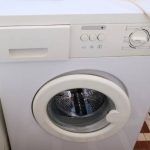Stainless steel cutlery is a popular choice for its durability and sleek appearance, but over time, it can develop a dull and discolored tarnish that detracts from its shine. Addressing the need for proper cleaning of stainless steel cutlery, this article provides readers with detailed guidance on how to clean stainless steel forks, spoons, and knives to ensure they gleam like new. From understanding the causes of tarnish to step-by-step instructions for removal, this guide covers the essential methods and preventive measures to maintain your cutlery’s sparkle.
Understanding Tarnish on Stainless Steel Cutlery
Tarnish is a thin layer of corrosion that forms on metals, including stainless steel, due to chemical reactions with substances like air, moisture, and certain foods. This can leave one wondering how to wash spoons and forks to make them shine again. While stainless steel is resistant to rust due to its protective chromium oxide layer, it’s still susceptible to tarnishing. The dull and sometimes darkened appearance that tarnish imparts is not only unsightly but can also suggest a lapse in proper cutlery care.
Several factors contribute to tarnishing, ranging from environmental exposure to the residues of acidic or salty foods. Recognizing these factors is the first step in treating existing tarnish and preventing future dullness, ensuring the cleaning of stainless steel cutlery is effective.

Preparing to Clean Your Tarnished Cutlery
Before you begin, ensure you have the proper materials and have performed initial steps to ensure the best outcomes. Here’s a quick guide on how to clean spoons and forks at home from plaque and tarnish:
- A mild dish soap
- White vinegar or baking soda
- Warm water
- A soft cloth or sponge
- A non-abrasive scrubber, such as a toothbrush
Before tackling the tarnish, wash your cutlery with a mild dish soap and warm water to remove surface dirt, grime, or food particles.
Cleaning Tarnished Stainless Steel Cutlery
The process of how to clean stainless steel forks, spoons, and knives must be thorough yet gentle to avoid damage. Here’s a guide that outlines how to return the shine to your cutlery:
- Mix a solution of warm water and a few drops of mild dish soap.
- Soak your cutlery in the mixture for a few minutes to loosen the tarnish.
For natural methods to revive the shine and address tarnish:
Natural Methods:
- Vinegar Solution: Soak a soft cloth in a mixture of equal parts vinegar and water, then rub the cutlery gently to remove plaque and restore shine.
- Baking Soda Paste: Apply a paste made from baking soda and water to the tarnished areas and let it sit for a few minutes before wiping off, which is particularly effective in the cleaning of stainless steel cutlery.
Chemical cleaners are suitable for stubborn tarnish, proving that knowing how to clean spoons and forks at home from plaque doesn’t always require commercial products.
| Cleaning Agent | Dilution Ratio | Application Time | Use For |
|---|---|---|---|
| Mild Dish Soap | A few drops per cup of water | Immediate | Initial cleaning and light tarnish |
| White Vinegar | 1:1 with water | 5-10 minutes | Moderate tarnish; maintenance for shine |
| Baking Soda | 3:1 with water to form a paste | 5 minutes | Stubborn stains and heavy tarnish removal |
Cleaning with natural solutions often requires repetition to achieve the desired brightness and shine, but it is a safe and effective way to handle the cleaning of stainless steel cutlery at home.

Protecting Your Stainless Steel Cutlery from Future Tarnish
The adage ‘prevention is better than cure’ rings especially true when it comes to stainless steel cutlery. The process of keeping your utensils looking their best isn’t confined to the occasional polish – regular maintenance is key. A proactive approach will save both time and effort, and keep your cutlery ready for use at any time, with an impressive shine that you can be proud of.
Regular maintenance tips include gently drying your cutlery immediately after washing to prevent the formation of water spots, which can prompt tarnish over time. Additionally, avoid leaving cutlery to sit in water for prolonged periods or leaving them unwashed after use, as this can accelerate the tarnishment process due to prolonged exposure to food residues.
Proper storage plays a vital role in the long-term care of stainless steel cutlery. Consider these best practices for storage:
- Use a dry, clean cutlery tray with individual slots for each type of utensil to prevent scratching and contact with other metals, which can lead to galvanic corrosion.
- If using a cutlery caddy, make sure it has proper ventilation to avoid trapping moisture.
Be mindful of the cleaning agents used in dishwashers, as some may contain harsh chemicals that contribute to tarnishing. Handwashing is often recommended to control the cleaning environment more effectively. However, if machine washing is a must-do, ensure that you’re using dishwasher soap that is conducive to the preservation of stainless steel’s integrity.
Conclusion
Cleaning and maintaining stainless steel cutlery doesn’t have to be a daunting task. With the right knowledge and materials, your spoons, forks, and knives can continue to look as good as the day you bought them. Remember that consistency in cleaning, proper storage, and avoiding harsh chemicals will go a long way in preventing tarnish from taking away the shine from your cutlery set. Embrace these simple practices, and you can enjoy the lustrous appeal of your stainless steel cutlery for many years to come.

FAQs
Q1: Can you prevent stainless steel cutlery from tarnishing completely?
A1: While you can’t prevent stainless steel cutlery from tarnishing entirely because it naturally reacts with elements in the environment over time, regular cleaning, immediate drying, and proper storage can significantly slow down the process and keep your cutlery shining longer.
Q2: How often should you polish stainless steel cutlery?
A2: Stainless steel cutlery should be polished whenever you notice it starting to lose its luster, which will vary based on usage and the cutlery’s exposure to tarnishing elements. For many households, polishing every 1-2 months is sufficient, but cutlery used daily may require more frequent attention.
Q3: Are natural cleaning methods as effective as chemical cleaners?
A3: Natural cleaning methods can be just as effective as chemical cleaners and are often safer for daily use. Substances like baking soda and vinegar can work wonders on tarnish without the potential risks associated with harsh chemicals.
Q4: What should you do if tarnish doesn’t come off with initial cleaning?
A4: If tarnish persists after initial cleaning, you can repeat the natural cleaning methods or use a specialized stainless steel cleaner according to the product instructions. For particularly stubborn tarnish, consider using a professional polishing service.
Q5: Can dishwasher use cause stainless steel cutlery to tarnish?
A5: Yes, dishwashers can potentially cause stainless steel cutlery to tarnish due to high temperatures, the presence of other metals in the dishwasher, or harsh detergents. To prevent this, hand wash your cutlery when possible and choose dishwasher detergents that are gentle on stainless steel.


